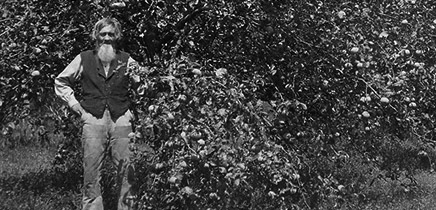Constructed in 1938, the Chaska Historical Marker is a small, 1.2-acre wayside rest. The wayside rest sits along the former U.S. Highway 212, and is accompanied by approximately nine acres of landscaping. To this day, it is a sight of local historical significance.
The Chaska Historical Marker was built in 1938 by the Minnesota Department of Highways (MHD), along U.S Highway 212 (now County State Aid Highway 61). Its purpose was to serve travelers on Highway 212 by providing a place to rest and eat, similar to the wayside rests that can be found along interstate highways today. The wayside rest was construction as part of a 2,100 foot-long MHD roadside development project and sits at the southwestern end of the 2,100-foot span. In addition to the wayside rest, the roadside development project cleared and dug up approximately nine acres of the Highway 212 right-of-way, carved out slopes and ditches, and hid a pre-existing 2.5-acre MHD gravel pit located due north of the wayside rest. To hide the gravel pit from the highway and wayside rest, the roadside development project used a series of plantings, which consisted of laurel willow trees, rosy Tartarian honeysuckle shrubs, and Siberian pea shrubs. The developers also created a curving entrance road into the gravel pit, adjacent to the wayside rest.
The wayside rest and the associated Highway 212 landscaping were designed by Arthur Richardson Nichols, a prominent Minnesota landscape architect. Nichols worked in collaboration with highway engineer Harold E. Olson, chief of the MHD’s Roadside Development Division. The MHD built the wayside rest, and stuck closely to the original design plans.
The primary feature of the wayside rest is a historical marker that doubles as a retaining wall, set into the side of a steep, wooded hill. The original plans were to carve out the earth to help the wall blend into the hillside and to create the flat picnic area in front of it. The wall is gently curved, and measures approximately 80 feet long. It was built of striated gray Mifflin limestone laid in a random ashlar pattern. Judging by outcroppings of similar limestone present in the area, the stone used for the wall was probably quarried locally. The masonry work displays a high level of craftsmanship, with the use of local materials being a characteristic of the National Park Service Rustic Style.
The wall has a symmetrical tripartite design with a ten-foot, eight-inch-long stepped central shaft flanked by thirty-four-foot, six-inch-long wings. The central shaft has a rectangular niche that houses a bronze plaque surrounded by red brick. The marker reads “Little Rapids Fur Post”, and gives a brief history of Jean-Baptiste Faribault and his history of fur trading in the area. The central shaft is flanked by two low benches. The benches have six foot by sixteen inch poured concrete seats that rest on four squat-mortared bases built over concrete footings. A small, slightly-elevated flagstone plaza sits directly in front of the central shaft, situated upon a poured concrete footing. The plaza visually emphasizes the central shaft, and provides a low platform from which to read the marker’s plaque.
The Chaska Historical Marker has continued to serve as a wayside rest since its construction in 1938 and is still owned by the Minnesota Department of Transportation (Mn/DOT), and will eventually be turned over to Carver County. In 2009, Mn/DOT rehabilitated the wayside rest’s property, following the Secretary of the Interior’s Standards for the Treatment of Historical Properties, including the Guidelines for the Treatment of Cultural Landscapes. The rehabilitation process was guided by original construction plans and four historical photos of the property. Parts of the rehabilitation process included repairing and replacing the damaged stone of the marker-retaining wall; correcting the drainage; fixing the damaged benches on either side of the central shaft; renovating the flagstone plaza; and replacing the damaged and vandalized bronze plaque mounted upon the wall’s central shaft.
The historic center of the city of Chaska lies to the east and northeast of the wayside rest, with residential neighborhoods to the west and northwest, and the Chaska portion of the Minnesota Valley National Wildlife Refuge to the south, across former Highway 212. Of the 2,100 foot-long roadside development project, only this wayside rest retains the distinct design and historical integrity of the original project. The gravel pit’s curving entrance road remains, but most of the plantings along it are gone. The area of the former gravel pit is now occupied by a Carver County public works facility with a modern headquarters building.
United States Department of the Interior, “Chaska Historical Marker.” National Register of Historic Places Registration form, Chaska, MN, 2002.


